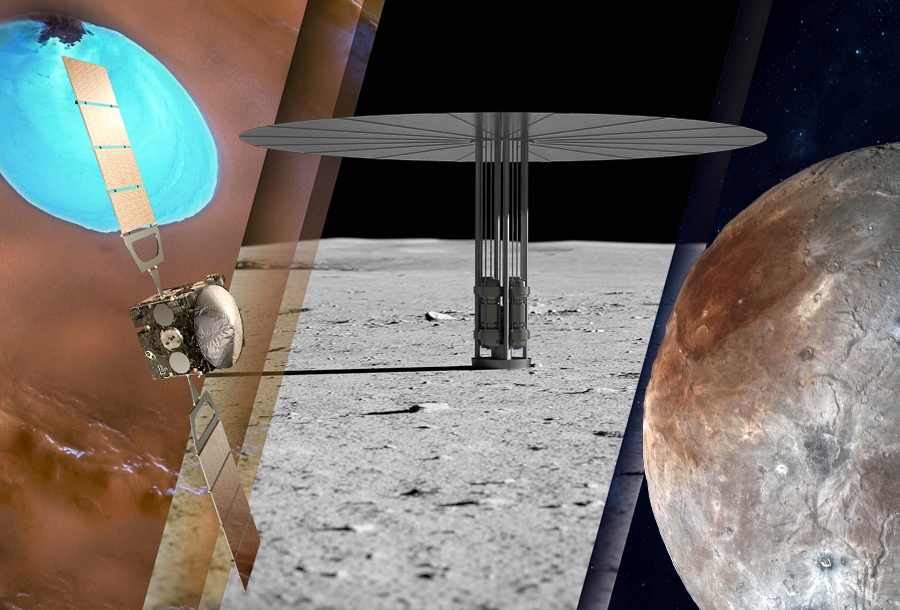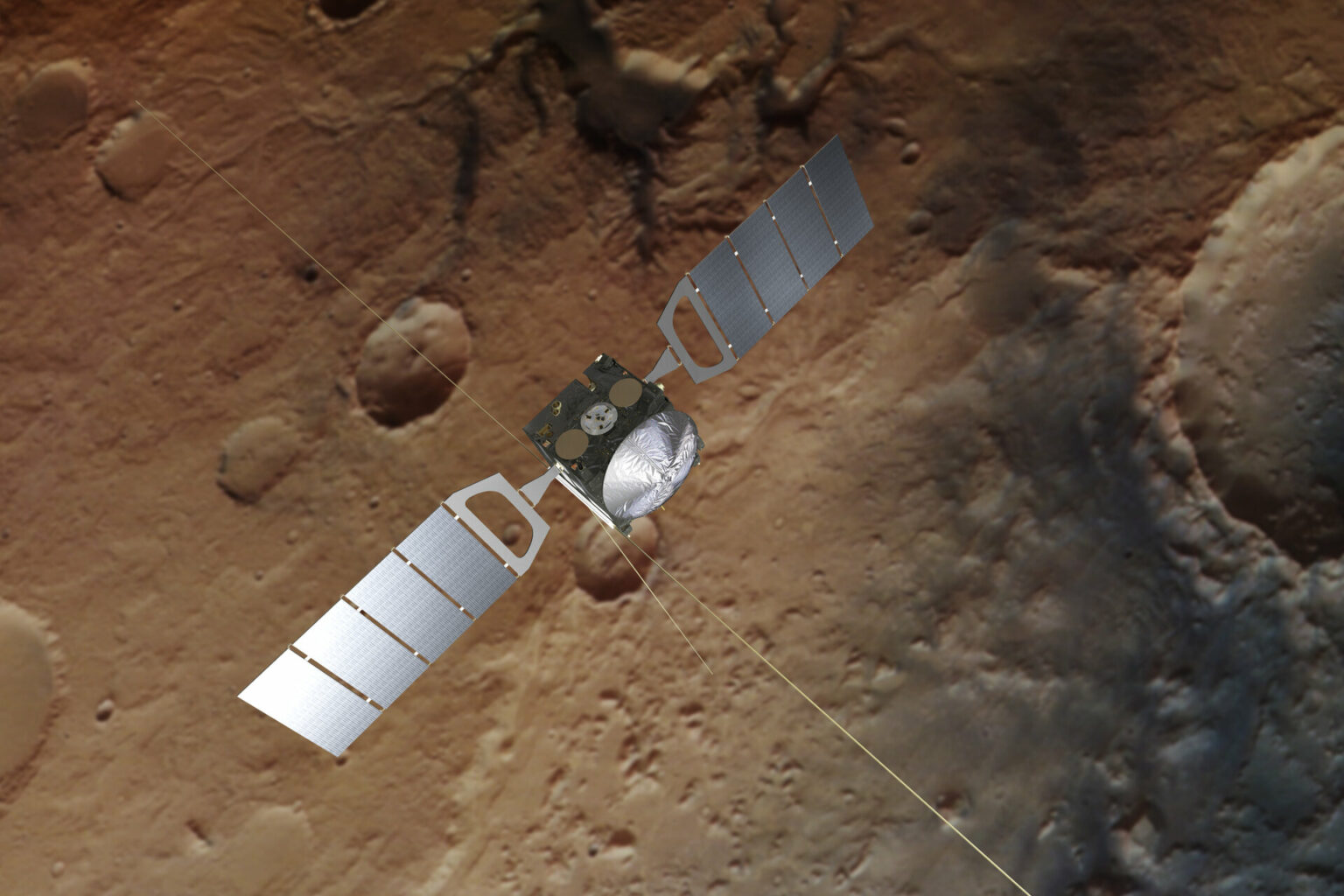Selection of the most interesting space news for breakfast: In Dnipro, the educational and entertainment program Noosphere STEM Camp was organized for children from Mariupol. Starlink may become unsuitable for Americans due to 5G ground networks, and the MARSIS Martian radar will be transferred to a new operating system.

NASA extends InSight’s mission to break new ground on Mars
NASA’s InSight Mars lander team has decided to extend the mission’s deadline in order to “maximize the science”. The lander was expected to shut down the seismometer (InSight’s sole active research instrument) by the end of June to conserve energy to enable the probe to survive on its now dust-laden solar panels until December 2022.
However, after some deliberation, the team now plans to program the lander so that the seismometer can operate a little longer — until August or September — if all things go well. This will come at a cost, however, as doing so may drain the lander’s batteries sooner and cause the spacecraft to lose power. The upside could be that the strategy may allow the seismometer to detect more of the planet’s enigmatic “marsquakes”.
In Dnipro, an educational and entertainment program was organized for children from Mariupol
A free 4-day educational and entertainment program Noosphere STEM Camp was held in Dnipro for children from Mariupol. 50 young Mariupol residents from 4 to 13 years old became participants of the STEM competition.
At the archeology master class, the youngest group was shown the peculiarities of the profession in a playful way and given a chance to try themselves as a real archaeologist. The middle group was trying out robots at that time. The children assembled and programmed them, controlling the machines using tablets.
The organizers are sure that it is very important to work with children now to distract them from the horror of war.
Market News

Through Starling, NASA will test complex swarm operations
NASA is preparing to launch Starling, its first satellite swarm. Instead of communicating directly with the four Starling cubesats, mission operators will send instructions to the swarm as a single entity.
If successful, “swarms have a potential to revolutionize the way we do science,” said Howard Cannon, NASA Starling project manager at the NASA Ames Research Center. “Instead of having one monolithic spacecraft that you are dependent on operating properly, you can have multiple smaller spacecraft that are less expensive.”
Swiss Airline easyJet Signs on for Inmarsat and ESA Iris Program
Swiss airline easyJet will be the first airline partner for Inmarsat and the European Space Agency’s (ESA) Iris program to modernize air traffic management.
Iris, developed in a public-private partnership launched by ESA, is a service designed to offer high bandwidth and cost-effective satellite datalink communications between air traffic controllers and pilots. It allows aircraft to send and receive live data with ground systems during the entire flight. The service operates on Inmarsat’s SB-S platform.
SpaceX warns 5G plan would deny Starlink to most Americans
SpaceX warned that its Starlink broadband network would become unusable for most Americans if a proposal to use the 12 GHz band for terrestrial 5G is approved. U.S. satellite broadcaster Dish Network is seeking permission to operate a high-power mobile service in the 12 GHz band, which is part of the Ku-band spectrum that Starlink, OneWeb and other satellite operators use to connect with user terminals. In a letter to the Federal Communications Commission, SpaceX said tests it conducted in Las Vegas shows how the proposed network would cause Starlink users to “experience harmful interference” more than 77% of the time.
Appropriations Subcommittee cuts NASA budget proposal
The House Appropriations subcommittee that funds NASA is recommending $25.45 billion for the agency in FY2023. While a substantial increase over current funding of $24.04 billion, the total is half a billion less than the $25.97 billion President Biden requested.
Kuaizhou-1A returns to flight with test satellite launch
A Kuaizhou-1A rocket sent the Tianxing-1 satellite into orbit late Tuesday, marking a return to flight six months after the solid light-light launcher suffered failure. The Kuaizhou-1A lifted off from a transport erector launcher at 10:08 p.m. Eastern June 21 (0208 UTC June 22) from the Jiuquan Satellite Launch Center in the Gobi Desert.
NASA Announces Artemis Concept Awards for Nuclear Power on Moon
NASA and the U.S. Department of Energy (DOE) are working together to advance space nuclear technologies. The agencies have selected three design concept proposals for a fission surface power system design that could be ready to launch by the end of the decade for a demonstration on the Moon. This technology would benefit future exploration under the Artemis umbrella.
The contracts, to be awarded through the DOE’s Idaho National Laboratory, are each valued at approximately $5 million. The contracts fund the development of initial design concepts for a 40-kilowatt class fission power system planned to last at least 10 years in the lunar environment.
Interesting

Martian radar to receive new software
Specialists of the National Institute of Astrophysics of Italy have developed a new software designed for the MARSIS radar installed on board the Mars Express probe. It will allow the instrument to obtain more detailed data on the subsurface layers of Mars and Phobos.
Mars Express was launched in 2003. It became the first European spacecraft to enter orbit around another planet. There are nine scientific instruments on board the Mars Express, including the MARSIS radar. Its main task is to search for liquid water and water ice under the surface of Mars. MARSIS is able to probe the surface of the planet to a depth of 5 km. Such a large penetrating power is achieved by the fact that the main radar antenna has a diameter of 40 meters.
Scientists identify a possible source for Charon’s red cap
Southwest Research Institute scientists combined data from NASA’s New Horizons mission with novel laboratory experiments and exospheric modeling to reveal the likely composition of the red cap on Pluto’s moon Charon and how it may have formed. This first-ever description of Charon’s dynamic methane atmosphere using new experimental data provides a fascinating glimpse into the origins of this moon’s red spot.
“Prior to New Horizons, the best Hubble images of Pluto revealed only a fuzzy blob of reflected light,” said SwRI’s Randy Gladstone, a member of the New Horizons science team. “In addition to all the fascinating features discovered on Pluto’s surface, the flyby revealed an unusual feature on Charon, a surprising red cap centered on its north pole“.
Follow us on Twitter to get the most interesting space news in time
https://twitter.com/ust_magazine

